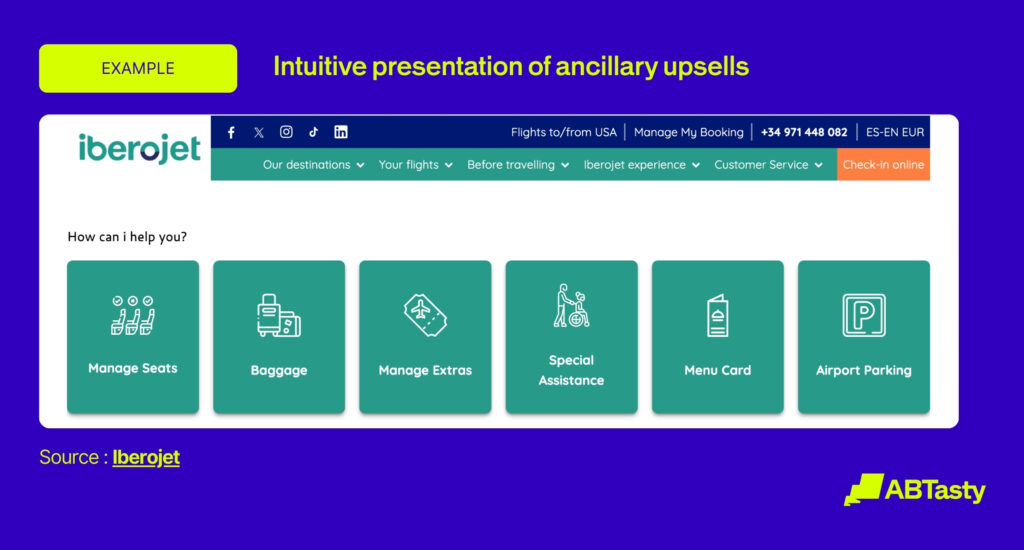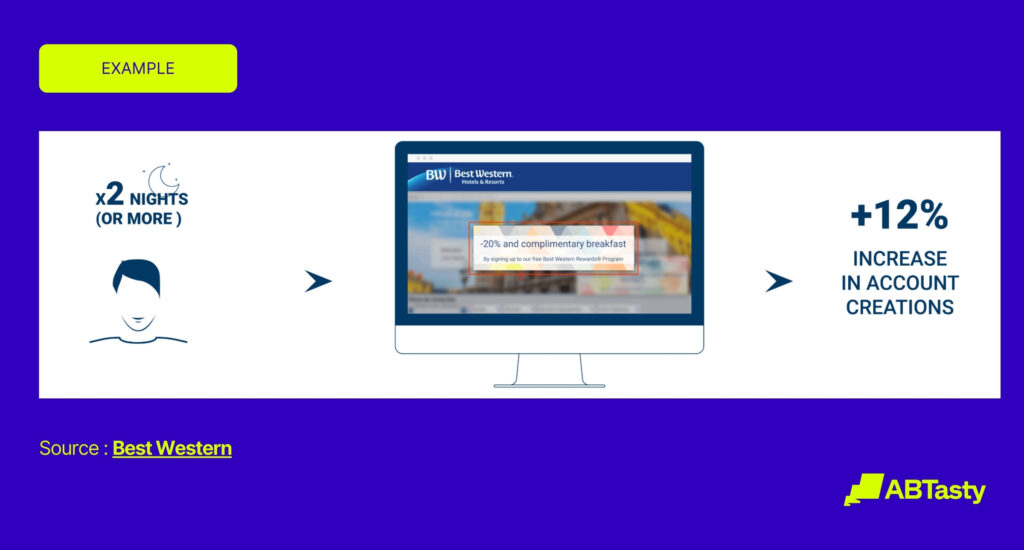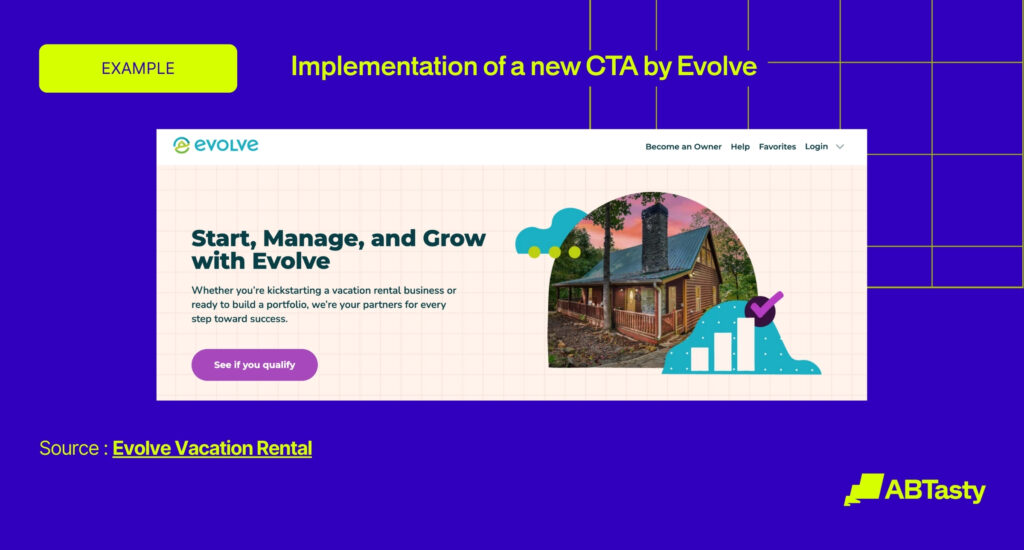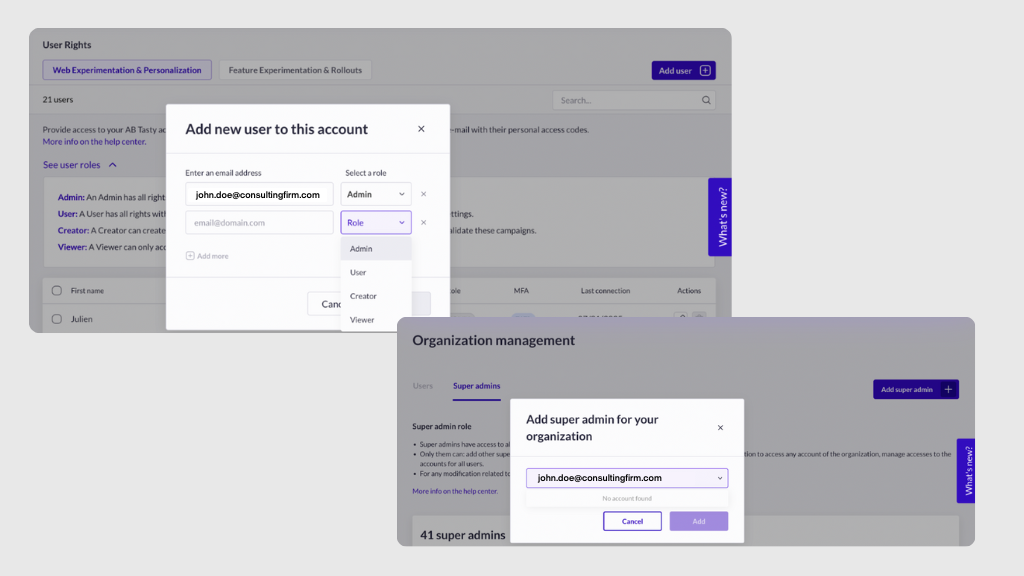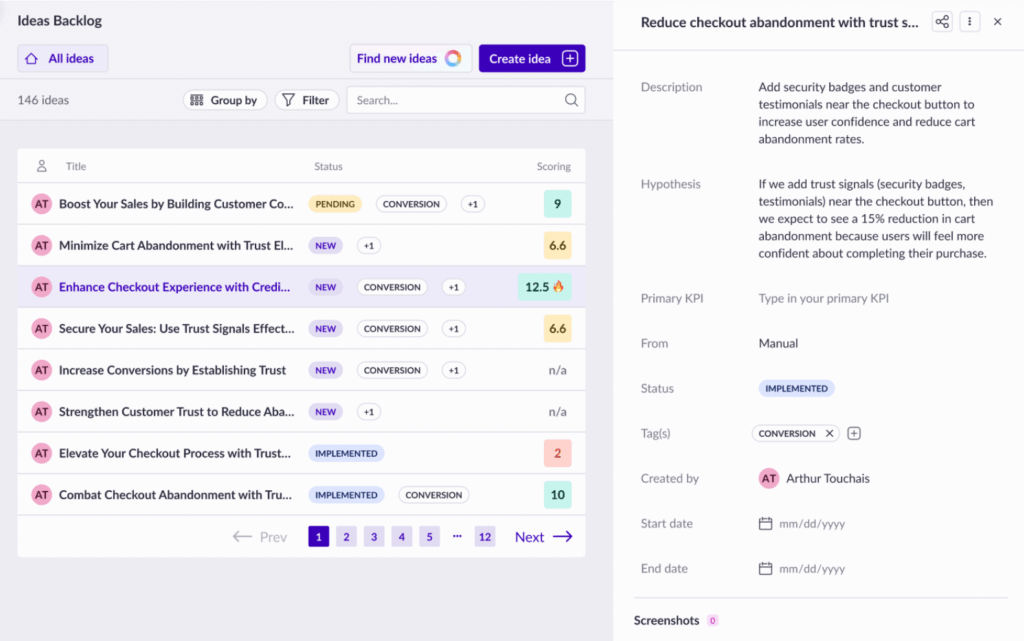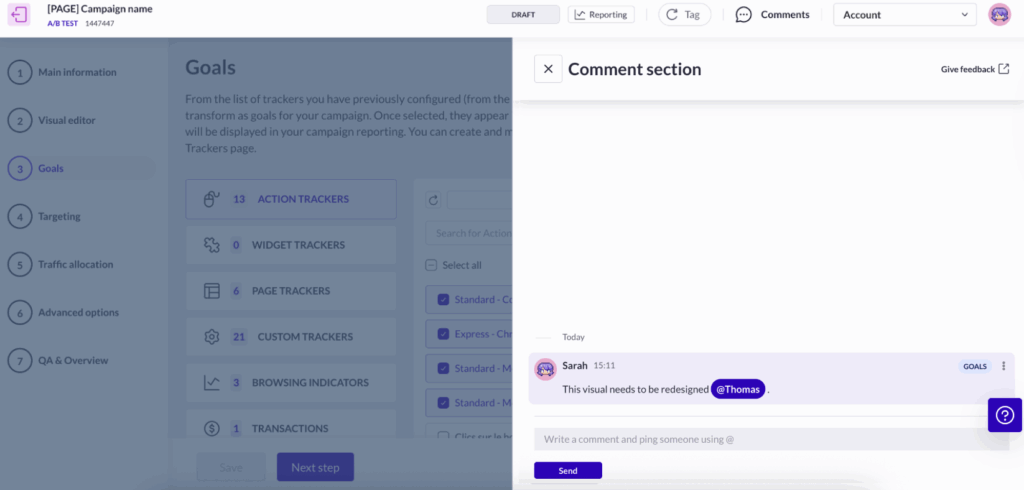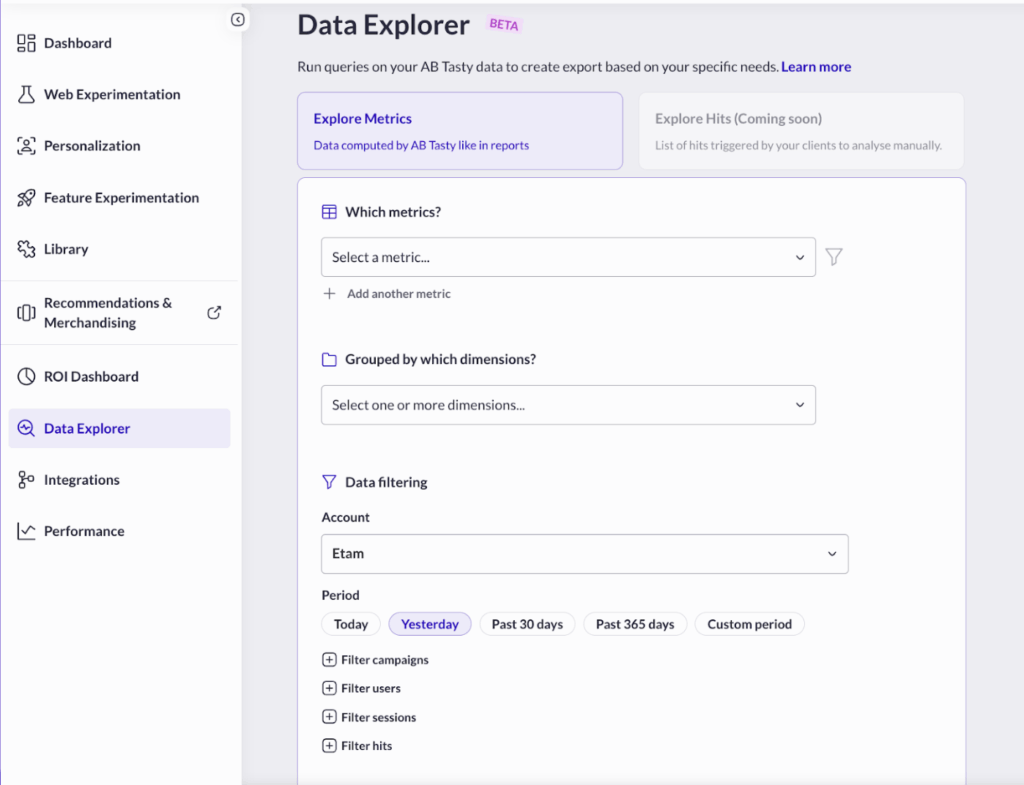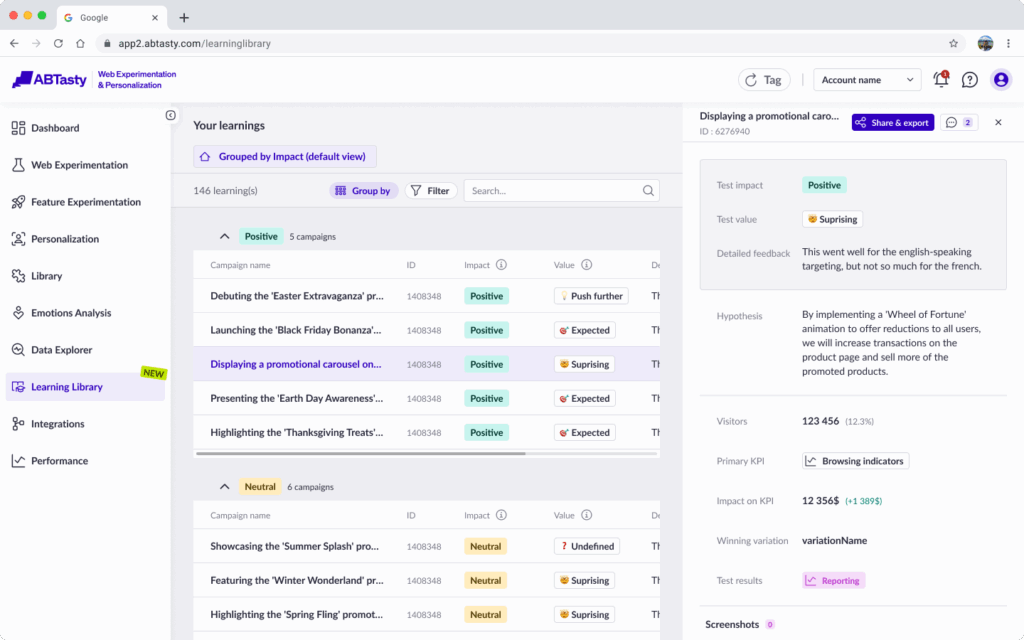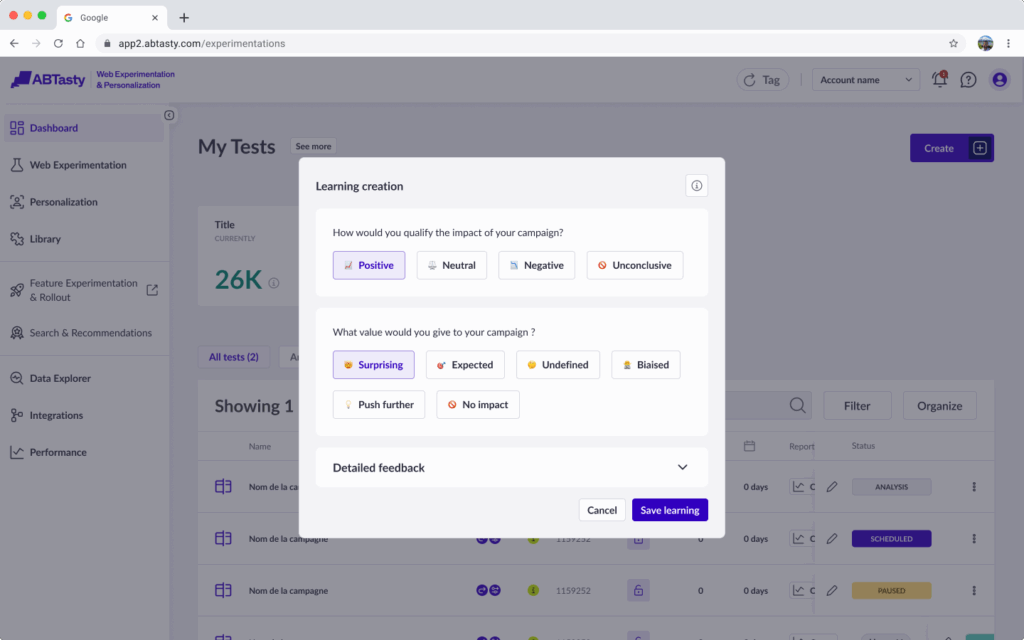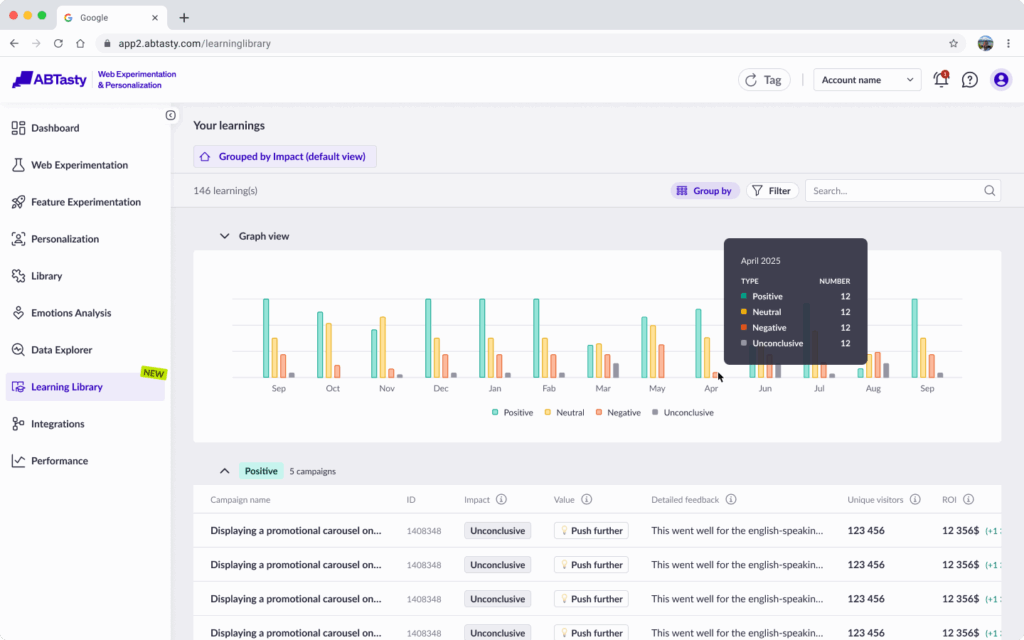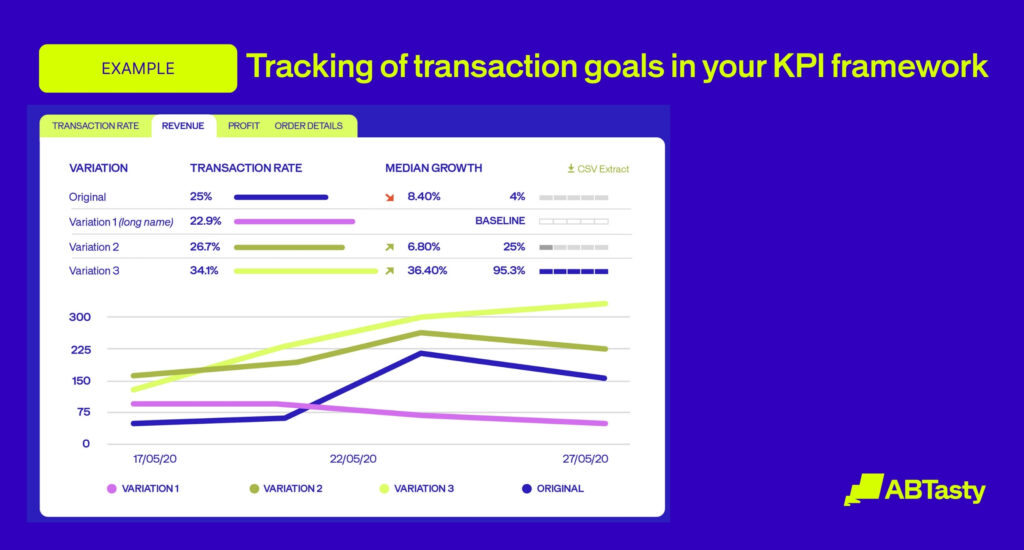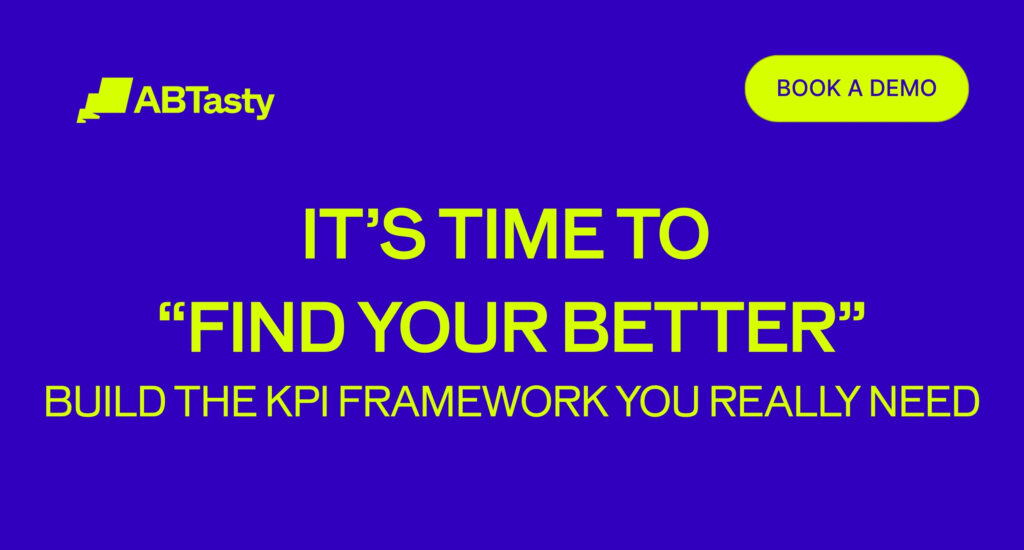Until recently, A/B testing has often been a time-consuming process for marketing teams and involved a certain amount of guesswork. But by integrating AI tools into the testing process, brands can iterate at scale, analyze data fast, and drive customer engagement like never before.
Join the AI revolution
If you think AI now seems to be everywhere, you’re probably right. It’s safe to say that AI is currently creating seismic upheaval in the marketing technology landscape. One of the chief reasons for this is AIs ability to analyze large amounts of data incredibly quickly and find patterns in that data. And that’s something that happens to make it ideal for A/B testing.
The use of AI agents for A/B testing is literally a gamechanger for marketing teams, making it much easier to scale their testing and experimentation programs. Coming up with ideas to test, designing those tests, analyzing results, and implementing changes can take hours of your time. But a lot of this can be accomplished in a matter of clicks with AI, leaving your team more time to focus on high-level tasks.
This lets you to accelerate your testing program to a scale that is literally not humanly possible. And because everything AI does is driven by hard data, it also takes the guesswork out of testing and experimentation. It gives you the confidence that everything from generating ideas to analyzing reports is based on verifiable visitor trends on your website. It can also provide you with valuable insights that a human might otherwise miss.
All of this opens up a world of enhanced personalization and continuous optimization that marketers have until recently only been able to dream about. AI agents are now set to redefine A/B testing and drive unprecedented growth for those that make them part of their testing program.
Introducing Evi, your evidence-based marketing agent
Evi is AB Tasty’s AI-powered marketing agent designed for evidence-based decision making. It transforms complex data into clear, actionable strategies for repeatable, measurable results, ensuring every step you take is grounded in evidence.
Evi helps brands scale their experimentation by facilitating fast test launching without running out of ideas. But Evi is also designed to enhance human creativity and collaboration, not to replace them. Instead, Evi empowers marketing teams, helping them move from ideas to iteration quickly and confidently.
With Evi, your team can:
- Greatly accelerate the testing process, speeding up your workflow with automated code generation and content suggestions
- Extract deeper insights, all driven by actual website data and feedback using built-in AI analysis
- Generate and prioritize test ideas based on your objectives and recent activity patterns
But don’t just take our word for it. Over 1,000 brands are already using Evi to constantly scale their testing and experimentation programs, resulting in noticeably accelerated campaign performance. By using Evi, they’ve reported:
- 33% more campaigns created
- 53% more campaigns launched
- 73% faster experimentation
The pressure now on companies to integrate AI into their testing programs can mean they end up with multiple AI tools for specific tasks with varying degrees of compatibility. By using Evi across your entire testing workflow, you guarantee the same consistent level of quality, the same context, and the same great results.
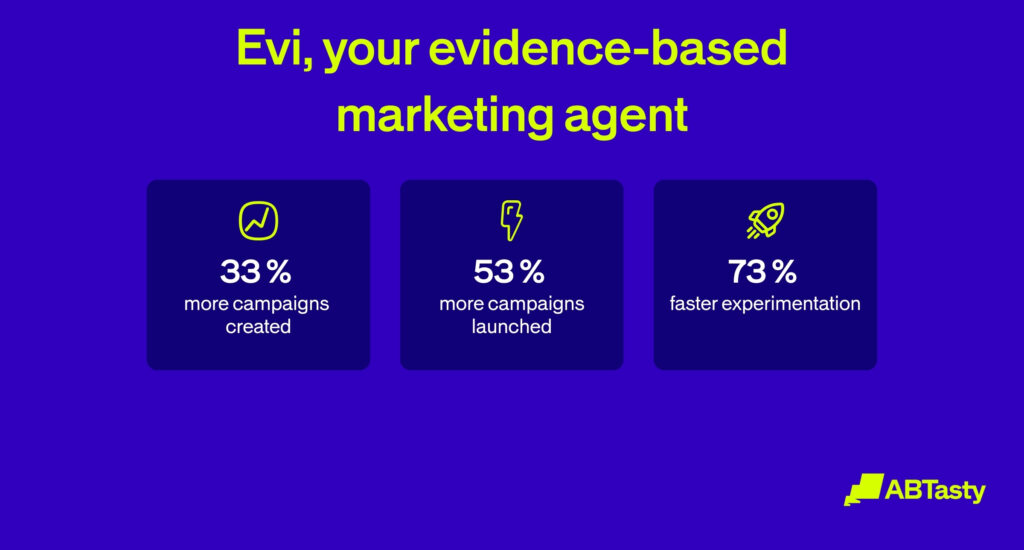
Features that transform how you test, learn, and grow
Evi’s six different AI agents will help you test with confidence, learn faster, and understand your users better than ever before.
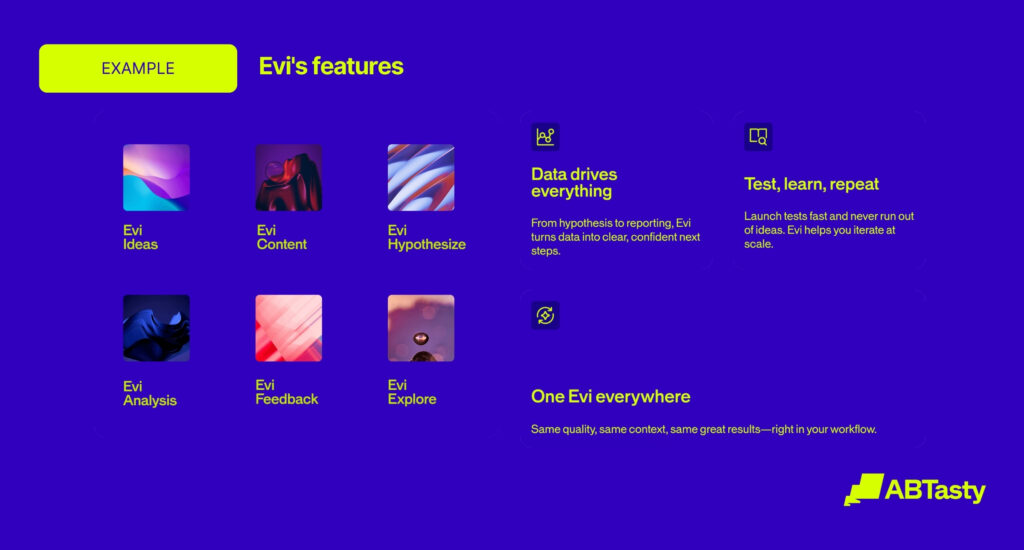
Evi Ideas
Unsure about what you should be testing next? Evi Ideas will scan pages of your website and generate ideas for new tests based on hard data that will actually impact your testing roadmap.
Evi Hypothesize
Struggling to craft a strong hypothesis for your experiments? Evi Hypothesize uses an automated checklist of essential elements to help you turn fuzzy thoughts into a sharp, well-structured hypothesis that has clear objectives.
Evi Content
Still waiting for the development team to build your experiment? Evi Content will let you turn your vision into reality in just a few clicks. No matter how good you are at coding, Evi Content will let you instantly transform concepts into actual buildable experiments.
Evi Analysis
Tired of spending hours staring at colorful charts and wondering what they all mean? Evi Analysis will analyze your campaign data and deliver clear, actionable insights. It highlights winning variations and breaks down why they drive transactions so you can feel confident in your next move.
Evi Feedback
Feel like you’re drowning in feedback but don’t know what to do with it all? Evi Feedback takes the heavy lifting out of Net Promoter Score (NPS) and Customer Satisfaction (CSAT) campaigns. It analyses customer responses right within your reports, quickly identifying key themes and sentiment trends.
Evi Explore
Want to know if your tests will actually drive revenue? Evi Explore, powered by our own patented metric, RevenueIQ, lets you see what each test is worth before you launch. This gives you the confidence to make faster, more profitable decisions based on real revenue projections, rather than simply relying on traditional metrics like conversion rate or average order value (AOV).
Finally, AI you can trust
And you can rest assured that Evi only uses the right data for the right task. This guarantees that your data is secure, transparent, and under your control at all times.
- Proprietary intelligence: Evi is exclusively trained on AB Tasty’s proprietary data. This ensures that it delivers relevant, experiment-ready outputs.
- Your inputs are yours and yours alone: Key features like Evi Ideas and Evi Content only process the prompts and screenshots that you supply, ensuring they remain private.
- Secure by design: The Evi Analysis feature runs entirely on AB Tasty’s own servers. No data is sent to external services.
Evi from AB Tasty grounds every step in evidence, notices what you don’t, and never gets it wrong, transforming how you optimize the digital experience.








